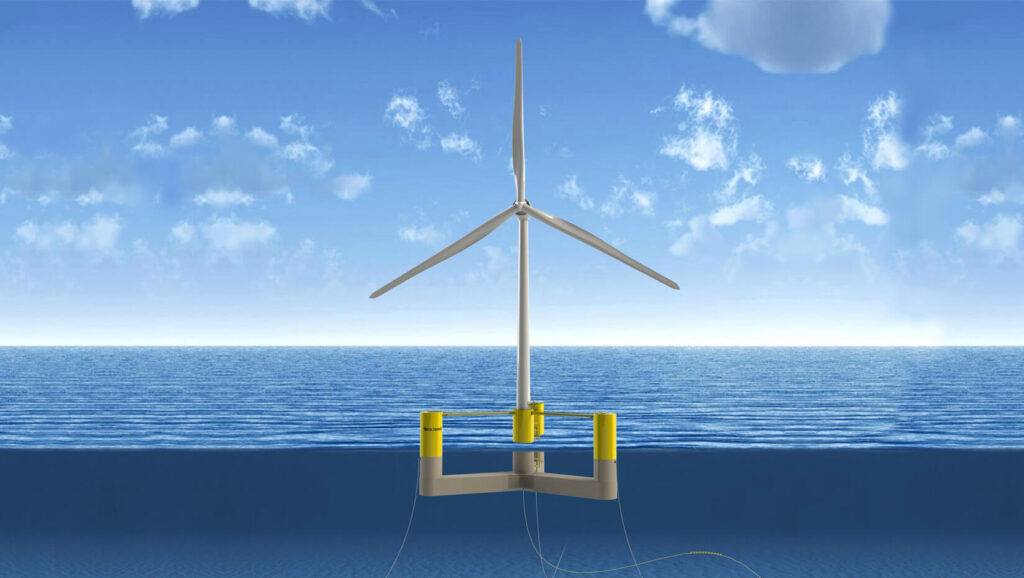VolturnUS is UMaine’s patented floating concrete hull technology that has been awarded 43 patents in the U.S. and abroad. (University of Maine image)
Maine has big goals for adding offshore wind to its energy repertoire with hopes that it will not only be a friendlier option for the planet, but help revitalize communities through its economic and labor opportunities. But before those benefits can be realized, there are still a number of outstanding questions.
Last month, the state and the federal government reached an agreement on a lease for an offshore wind research array that will sit about 30 miles southeast of Portland. It will take up about 15 square miles in federal waters and include up to 12 floating turbines that will help inform how floating offshore wind operates and interacts with ecosystems in the water.
Just last week, the Federal Bureau of Ocean Energy Management released its final environmental assessment that showed leasing activities such as surveys and installing meteorological buoys in the Gulf of Maine won’t harm the surrounding environment.
And while that assessment did not look at the impact of the offshore turbines, the goal of the research array is to better understand how they will interact with the Gulf of Maine ecosystems.
“The only way we really can answer those questions is to have this type of a program and this kind of a unique in-water opportunity to actually answer those questions,” said Stephanie Watson, offshore wind program manager for the state.
Research has been a throughline of Maine’s offshore wind efforts, Watson said, especially when thinking about the pioneering research and development from the University of Maine for semi-submersible floating turbines.
The next step in that process is to understand how to responsibly deploy the budding industry and actually transmit the energy back to shore, all while reducing impacts to the fisheries that are vital to the economy and culture of Maine, Watson said.
The state is partnering with Boston-based Diamond Offshore Wind to develop the research array; however, there will also be a state-coordinated research program that includes the departments of Marine Resources and Inland Fisheries and Wildlife.
The state’s Offshore Wind Research Consortium, a 26-person advisory board that was organized in 2021 to understand the local and regional effects of offshore wind power projects in the Gulf of Maine, will also contribute to the work.
Offshore wind research priorities
As part of its work over the past few years, the consortium identified priority areas to guide the research conducted on the array.
Among those priorities is improving seafloor mapping of the Gulf of Maine because it’s not currently well understood, Watson said.
“The Gulf of Maine is relatively understudied, in general,” Watson said, especially when compared to other marine areas of the United States.
She said this could be a result of the Gulf of Maine seeing less activity and shipping than other, larger regions.
Additionally, the consortium hopes to better understand fishing communities and how their socioeconomics could be affected by offshore wind. Relatedly, it wants the research array to look at various fishing technology and consider how best it can coexist with offshore wind.
Finding a positive working relationship between Maine’s heritage fishing industry and clean energy has been an ongoing conversation that the governor and congressional delegation have weighed in on. Gov. Janet Mills and Maine’s members of Congress praised a decision last March by the federal Bureau of Ocean Energy Management to exclude a vital lobster fishing area from the offshore wind leasing map.
One additional research priority for the arrays is exploring how different avian species, such as bats and birds, could be affected by the presence of wind turbines in the water.
“We have a long list, so we have a lot of work to do,” Watson said.
SUPPORT NEWS YOU TRUST.

